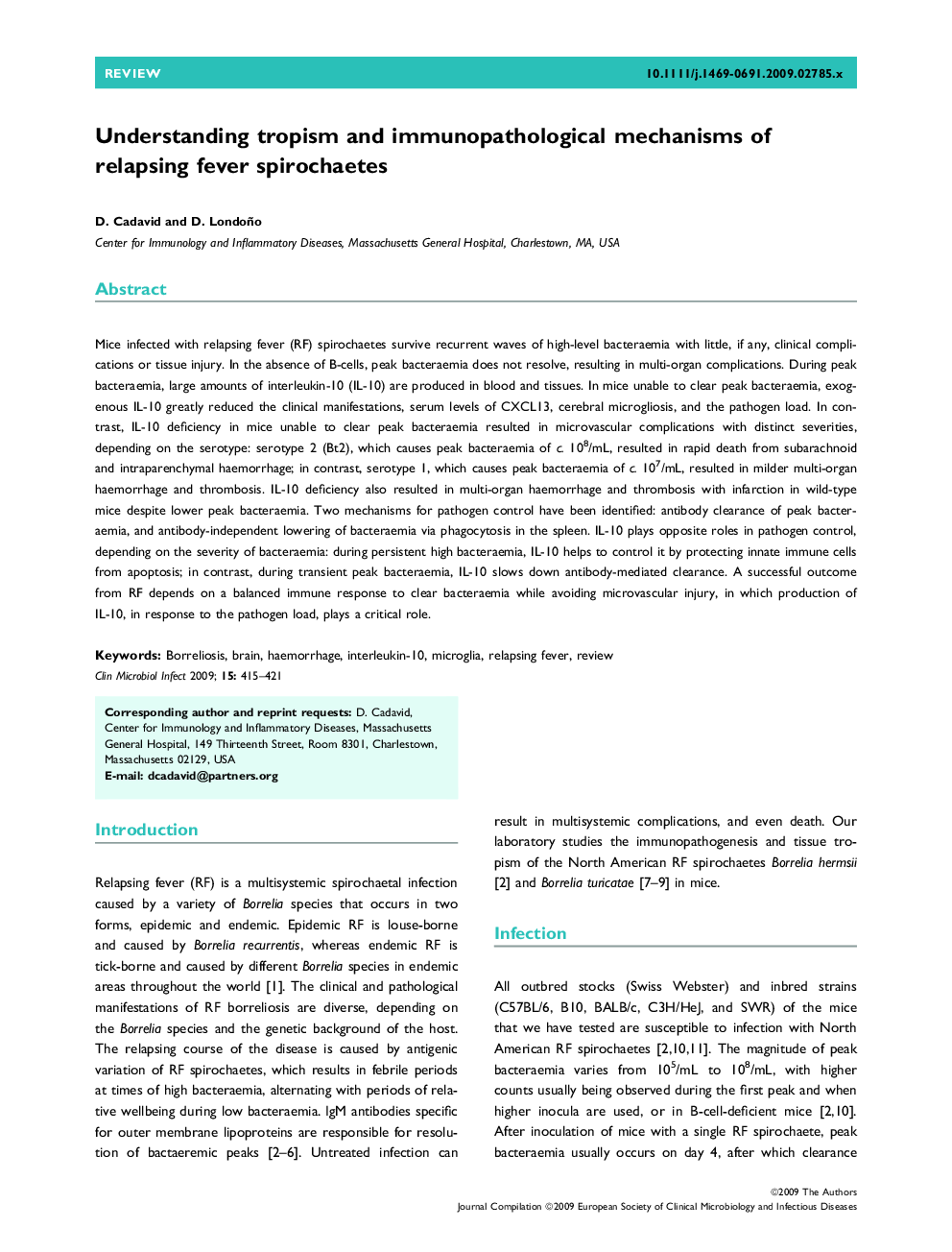| Article ID | Journal | Published Year | Pages | File Type |
|---|---|---|---|---|
| 3397722 | Clinical Microbiology and Infection | 2009 | 7 Pages |
Mice infected with relapsing fever (RF) spirochaetes survive recurrent waves of high-level bacteraemia with little, if any, clinical complications or tissue injury. In the absence of B-cells, peak bacteraemia does not resolve, resulting in multi-organ complications. During peak bacteraemia, large amounts of interleukin-10 (IL-10) are produced in blood and tissues. In mice unable to clear peak bacteraemia, exogenous IL-10 greatly reduced the clinical manifestations, serum levels of CXCL13, cerebral microgliosis, and the pathogen load. In contrast, IL-10 deficiency in mice unable to clear peak bacteraemia resulted in microvascular complications with distinct severities, depending on the serotype: serotype 2 (Bt2), which causes peak bacteraemia of c. 108/mL, resulted in rapid death from subarachnoid and intraparenchymal haemorrhage; in contrast, serotype 1, which causes peak bacteraemia of c. 107/mL, resulted in milder multi-organ haemorrhage and thrombosis. IL-10 deficiency also resulted in multi-organ haemorrhage and thrombosis with infarction in wild-type mice despite lower peak bacteraemia. Two mechanisms for pathogen control have been identified: antibody clearance of peak bacteraemia, and antibody-independent lowering of bacteraemia via phagocytosis in the spleen. IL-10 plays opposite roles in pathogen control, depending on the severity of bacteraemia: during persistent high bacteraemia, IL-10 helps to control it by protecting innate immune cells from apoptosis; in contrast, during transient peak bacteraemia, IL-10 slows down antibody-mediated clearance. A successful outcome from RF depends on a balanced immune response to clear bacteraemia while avoiding microvascular injury, in which production of IL-10, in response to the pathogen load, plays a critical role.
